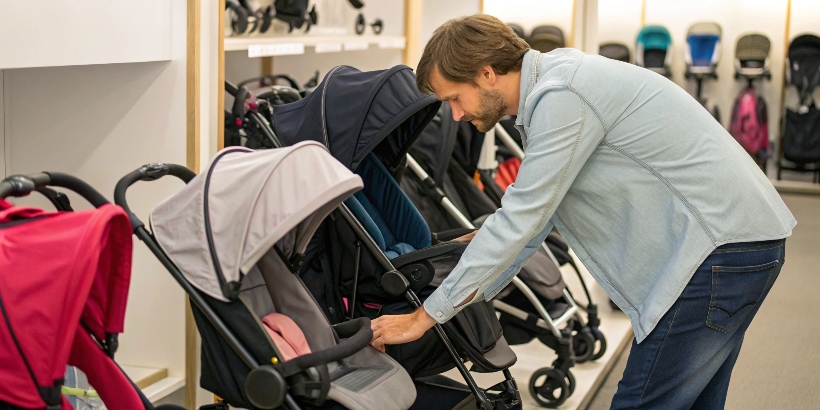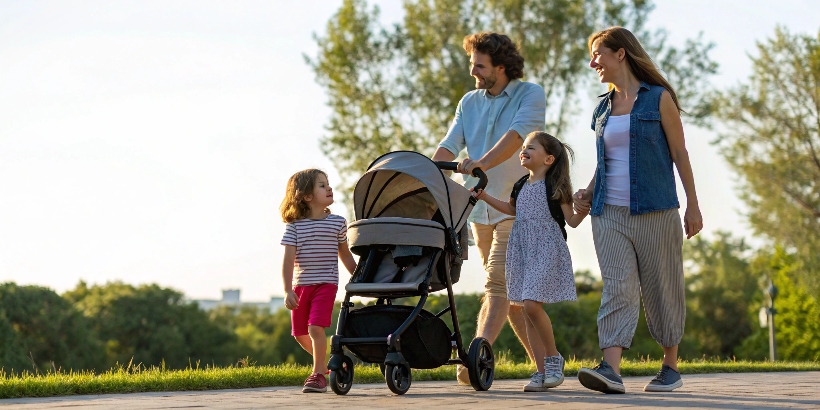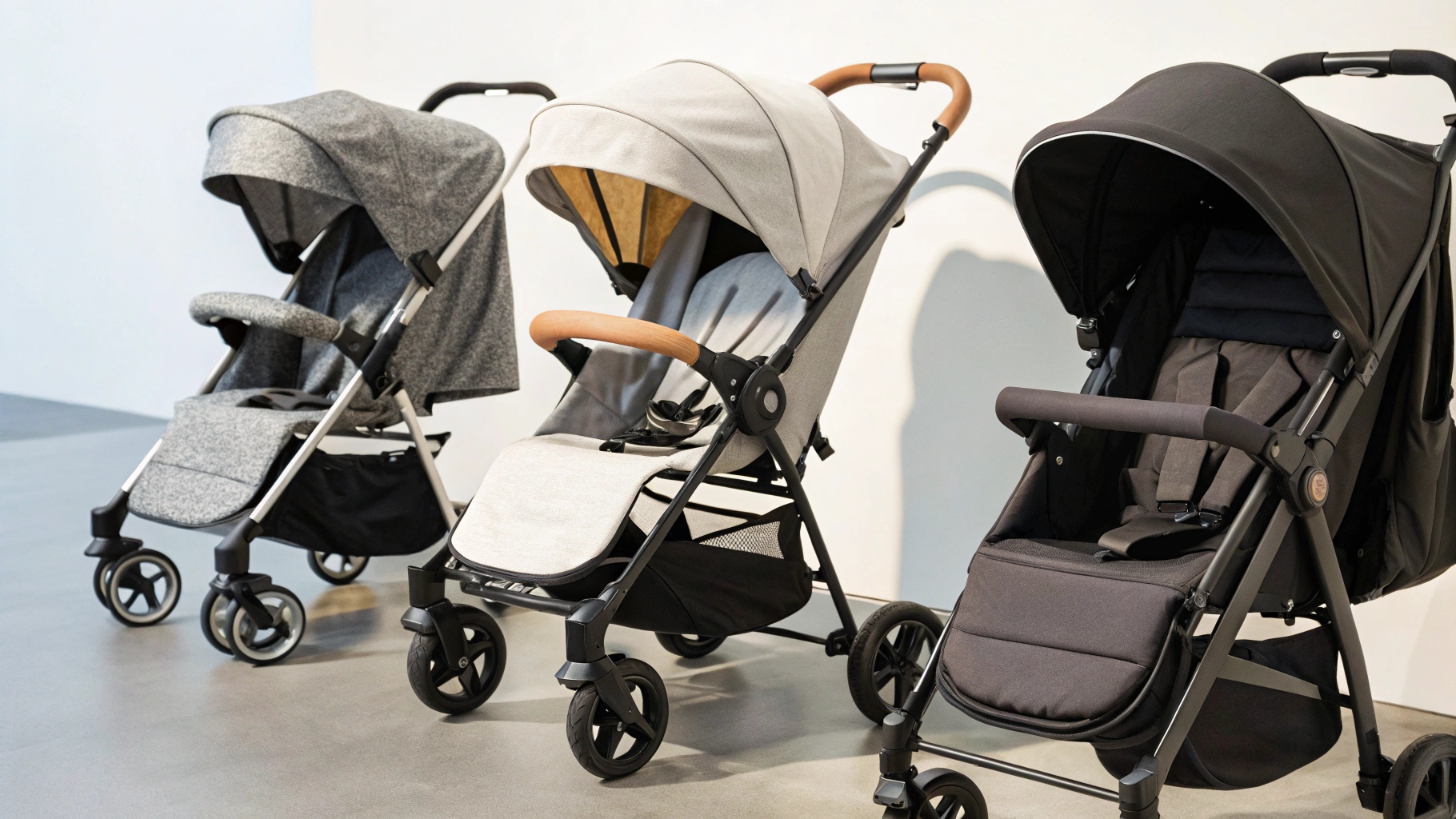High chairs are vital for feeding toddlers. But how do these essential pieces of baby gear come to life? You might be surprised by the detailed process behind their creation.
High chairs are manufactured through a multi-stage factory process involving material selection, precise cutting and molding of components (like plastic parts, metal frames, and fabric), assembly, and rigorous safety testing. This ensures each chair meets strict global safety standards.
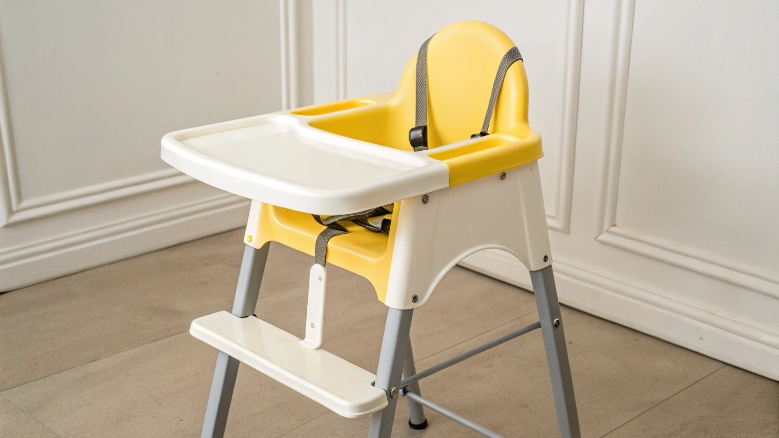
When I first sell high chair, I just pictured a simple seat. But after learning about the requirements for baby products, I realized it is much more complex. A lot of thought and precision goes into every single high chair. Let us explore how factories bring these vital products from raw materials to a finished item ready for your home.
What Materials Are Used to Make a High Chair?
A high chair needs to be strong, stable, and easy to clean. But what specific materials are chosen to meet these critical demands?
High chairs typically use a combination of durable, non-toxic materials: robust metals like steel or aluminum for the frame, food-grade plastics for trays and seats, and wipeable, often waterproof, fabrics for padding and covers.
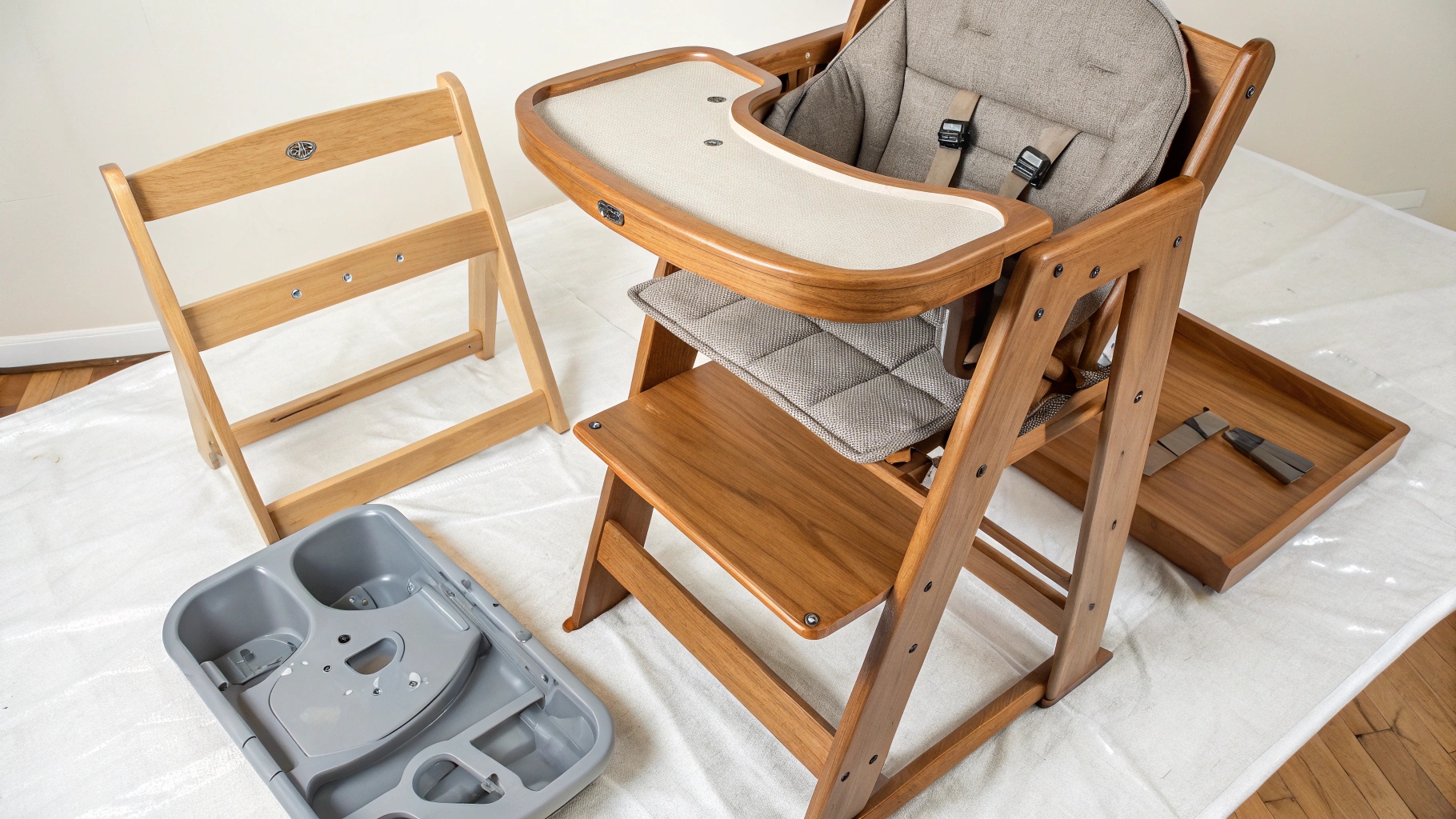
I once thought about the materials in a high chair. It needs to hold a squirmy child. It needs to withstand spills. It needs to be wiped down many times. The materials must be safe. They must be durable. They must also be easy to clean. Manufacturers carefully select materials for each part. They ensure the chair is safe for a baby. They also make sure it lasts a long time. This careful selection adds to the chair’s quality.
Frame Materials
The frame is the backbone of the high chair. It must be very strong. It needs to hold the child’s weight. It also needs to provide stability. Steel is a common material. It is very strong and durable. However, it can be heavy. Aluminum is another choice. It is lighter than steel. It also resists rust. Some designs might use a combination. The choice depends on the desired weight. It depends on the chair’s overall stability. These metals are often powder-coated. This finish adds durability. It also adds a nice look.
Plastic Components
Plastic parts are very common in high chairs. They make up the tray. They form parts of the seat. They also create connectors and footrests. Manufacturers use food-grade plastics. These plastics must be safe for children. They must not contain harmful chemicals like BPA. Polypropylene (PP) is a popular choice. It is durable. It is easy to mold. ABS plastic is also used. It is very strong. It resists impact well. These plastic parts are made through injection molding. Melted plastic is pushed into molds. This creates precise shapes for each piece.
Fabric and Padding
Many high chairs have padded seats. They also have fabric covers. These fabrics must be comfortable for the child. They must also be easy to clean. Polyester is a common fabric. It is durable. It can be made water-resistant. Some covers use PU leather. This material looks like real leather. It is easy to wipe clean. All fabrics must meet fire safety standards. They must be free from harmful dyes or chemicals. The padding inside is often foam. This foam provides cushioning. It adds comfort for the baby.
Other Components
High chairs also use other vital parts. Safety harnesses are essential. They keep the child secure. These harnesses are often made of strong nylon webbing. Buckles are usually plastic. They must be easy for parents to open. They must be hard for children to open. Wheels are often included. They make moving the chair easy. Wheels are usually made of plastic or rubber. Fasteners like screws and bolts hold the chair together. They are typically made of metal. These small parts are very important for the high chair’s function.
| Material Type | Purpose | Key Properties | Common Examples |
|---|---|---|---|
| Frame | Structural support | Strong, stable, durable, safe | Steel, Aluminum |
| Plastics | Tray, seat, connectors | Food-grade, non-toxic, impact-resistant | Polypropylene (PP), ABS |
| Fabric | Seat padding, covers | Wipeable, durable, fire-retardant | Polyester, PU leather |
| Harness | Child restraint | Strong, durable, secure | Nylon webbing |
| Buckles | Harness fastener | Easy to use by adult, child-resistant | High-strength plastic |
What Are the Main Steps in High Chair Production?
Manufacturing a high chair involves more than just putting pieces together. What is the precise sequence that transforms raw materials into a safe, usable product?
High chair production follows a systematic process: material preparation, frame fabrication (cutting, welding), plastic molding, fabric cutting and sewing, component assembly, and finally, thorough quality control and packaging.
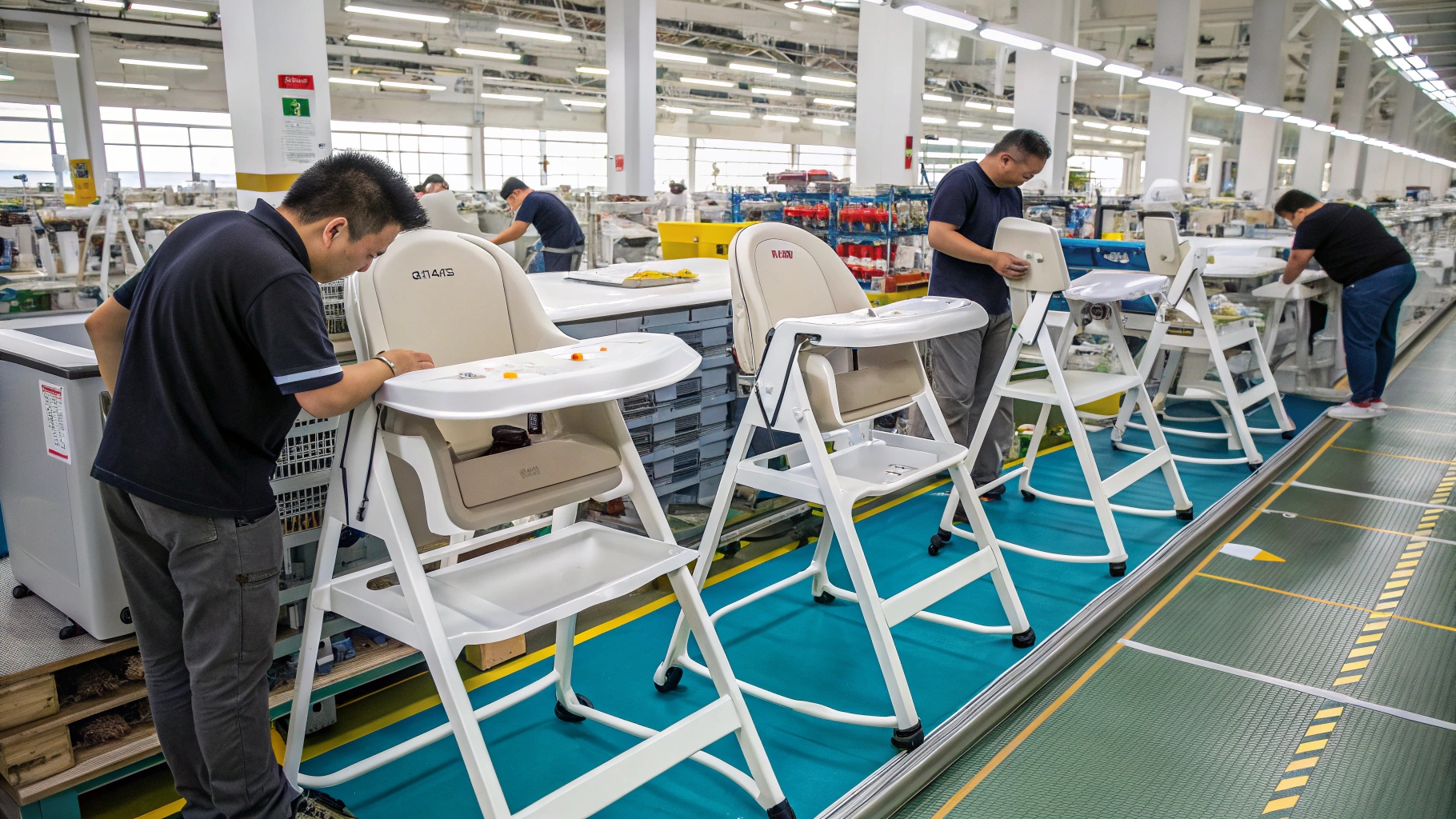
When I toured a factory, I saw how many steps it takes to make a high chair. It is not just one big machine doing everything. It is a series of specialized tasks. Each step has a purpose. Each one adds to the final product. The process is very organized. It starts with raw materials. It ends with a finished chair. This systematic approach ensures quality. It ensures efficiency. Let me explain the journey of a high chair.
Design and Prototyping
The first step is always design. Engineers create detailed plans using computer-aided design (CAD) software. They consider safety standards from the beginning. They design for stability. They design for ease of use. Once the digital design is ready, they create prototypes. These are often 3D printed. They help identify any flaws early. They allow for adjustments. This stage ensures the final product will be functional. It ensures it will be safe. It also helps in planning the manufacturing process.
Component Manufacturing
This stage involves making all the individual parts. Metal tubes for frames are cut to precise lengths. They are then bent into shape. Welding machines join the metal pieces. This forms the frame structures. These frames are then powder-coated. This gives them a protective finish. For plastic parts, factories use injection molding machines. Plastic pellets are melted. They are then injected into molds under high pressure. This creates parts like trays and seat bases. Fabric rolls are cut using automated machines. Industrial sewing machines then stitch these pieces together. This creates seat covers and harness straps. Each component is made with precision.
Assembly Line Operations
Once all the individual parts are ready, they move to the assembly line. This is where the high chair comes together. Workers perform sub-assemblies first. For example, wheels are attached to leg frames. Buckles are sewn onto harness straps. Then, the main assembly begins. The metal frame is put together. The plastic seat is attached. The tray is fitted. The fabric covers are slipped on. This stage often involves both manual labor and specialized tools. Workers follow strict instructions. This ensures every chair is assembled correctly.
Quality Control and Packaging
Quality control is critical at every stage. But final checks are done on the assembled high chair. Workers inspect for any defects. They check all joints. They test the folding mechanism. They test the tray attachment. The high chair then undergoes rigorous safety tests. This includes stability tests. It includes harness strength tests. It includes material toxicity tests. Once a chair passes all checks, it is cleaned. It is then folded down. It is carefully placed into its packaging box. All necessary instructions and warnings are included.
| Production Stage | Key Activities | Purpose | Quality Checks |
|---|---|---|---|
| Design & Proto. | CAD design, 3D printing, initial prototypes | Develop safe, functional product | Design review, prototype testing |
| Component Mfg. | Cutting, welding, molding, sewing | Create precise, high-quality parts | Dimensional accuracy, material integrity |
| Assembly | Sub-assembly, main assembly | Build the complete high chair | Correct part attachment, functional checks |
| Quality Control | Inspection, safety testing, final check | Ensure product safety and standards | Stability, harness strength, material safety |
Why Is Safety Testing So Important for High Chairs?
High chairs hold our most vulnerable users. So, why do factories invest so much in rigorous testing, and what does it prevent?
Safety testing for high chairs is crucial because it ensures the product prevents falls, entrapment, and choking hazards. Rigorous tests check stability, harness strength, material toxicity, and overall structural integrity under various stresses.
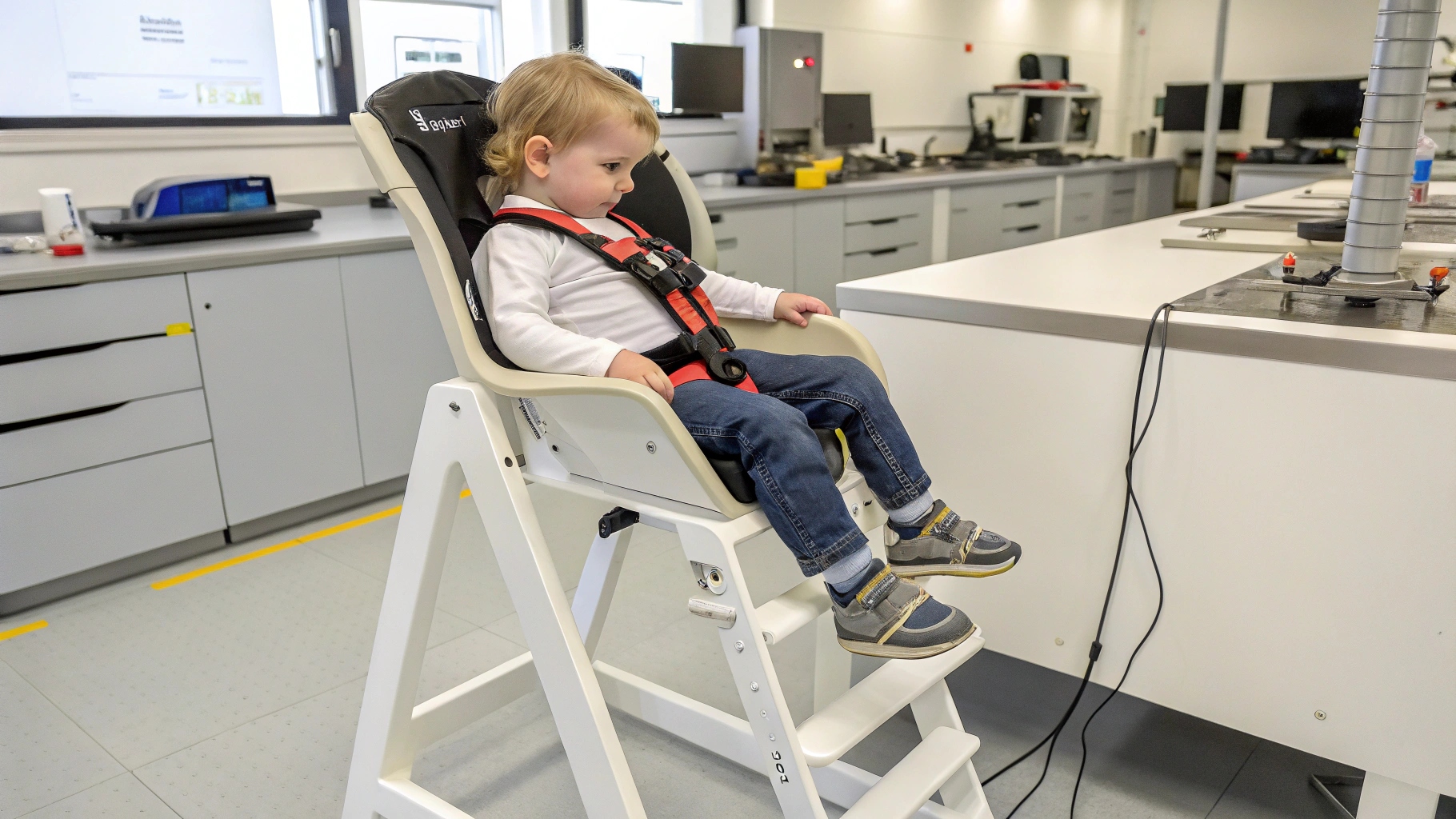
I cannot overstate the importance of safety when it comes to baby products. When I think about a high chair, I think about a place where a baby will eat, sometimes squirm, and spend time close to hot food. Any failure in design or manufacturing could have serious consequences. This is why safety testing is not just a suggestion. It is a legal and ethical requirement. It is a major part of the cost. It is a necessary investment to protect children.
Types of Safety Tests
Factories perform many different tests. Stability testing is crucial. It checks if the high chair can tip over easily. This is done by applying force or weight at different angles. Structural integrity tests push the frame and joints to their limits. This ensures they will not break under normal use. Harness strength tests ensure the straps and buckles will not fail. They must hold a child securely. Entrapment prevention tests check for gaps or openings. These gaps could trap a child’s head or limbs. Material safety tests look for harmful chemicals. They check for substances like lead, phthalates, or BPA. Drop tests simulate real-world impacts. These tests make sure the chair can withstand daily bumps and drops.
Standards and Regulations
Every country has its own safety standards for high chairs. For example, in the United States, high chairs must meet ASTM F404. In Europe, it is EN 14988. These standards outline specific requirements. They detail how tests must be performed. Adhering to these standards is not optional. It is mandatory for selling high chairs in those markets. Factories invest significant resources in understanding and meeting these rules. They work with third-party labs to verify compliance. This ensures objective testing. It provides proof of safety.
Impact of Failure
The consequences of a high chair failing a safety test are severe. A stability issue could cause a child to fall. This could lead to serious injury. A weak harness could allow a child to escape. This could result in a fall or other danger. Toxic materials could harm a child over time. Beyond the direct harm to children, there are legal and financial risks for the manufacturer. Recalls are very costly. They damage a brand’s reputation. This strong incentive drives factories to make safety their top priority. It is why every single high chair undergoes thorough checks.
| Test Type | What It Checks For | Why It Is Important |
|---|---|---|
| Stability Test | Resistance to tipping over | Prevents falls and head injuries |
| Harness Strength | Security of straps and buckles | Keeps child safely restrained |
| Structural Integrity | Durability of frame and joints | Prevents collapse or breaking parts |
| Entrapment Prev. | Absence of gaps for limb/head entrapment | Avoids choking or limb injuries |
| Material Toxicity | Absence of harmful chemicals | Protects child from chemical exposure |
| Durability Testing | Longevity under repeated use | Ensures product lasts, reduces replacement need |
Conclusion
High chair manufacturing involves precise material selection, detailed production steps, and strict safety testing. This complex process ensures each chair is durable, functional, and safe for young children.


